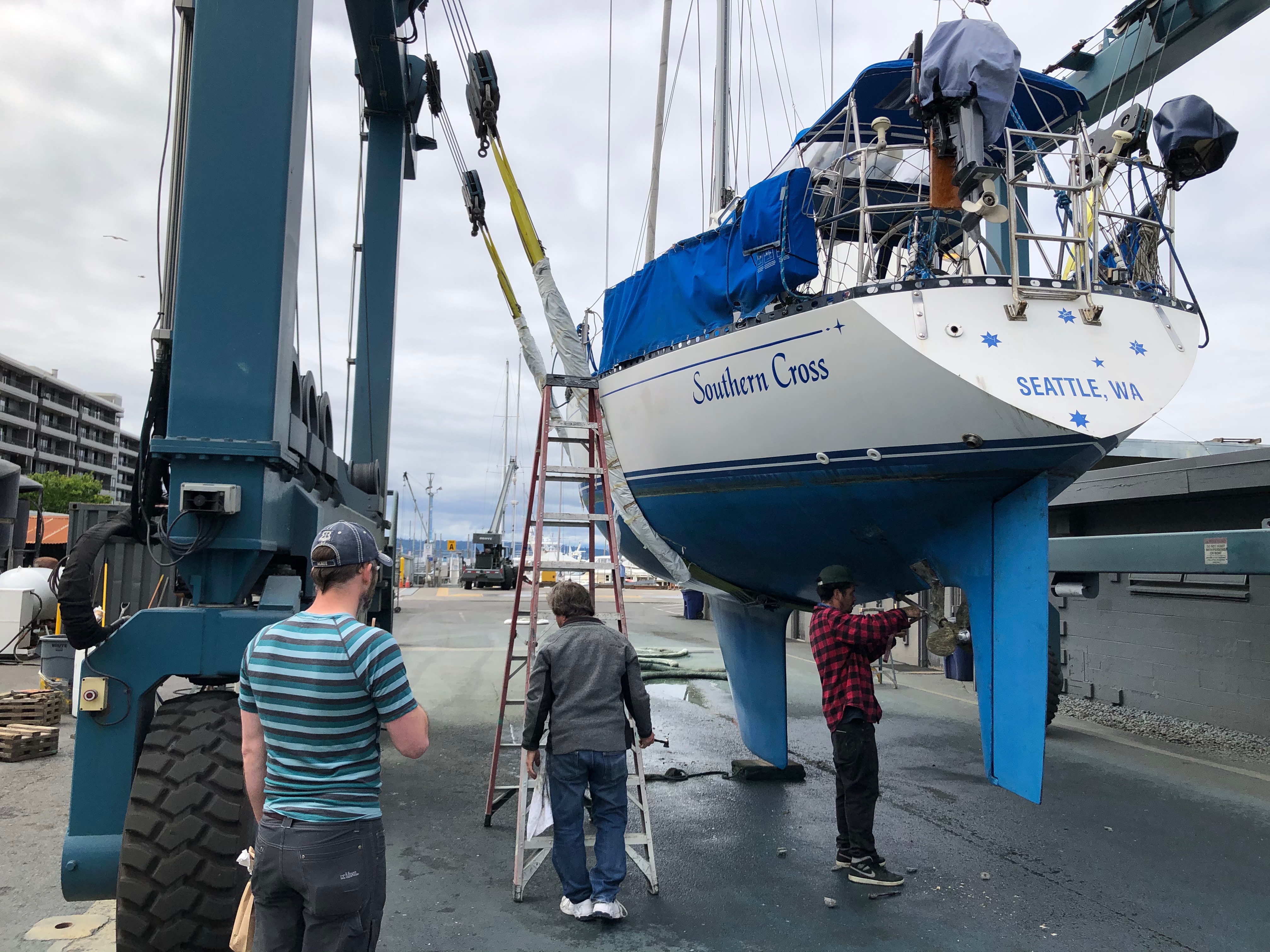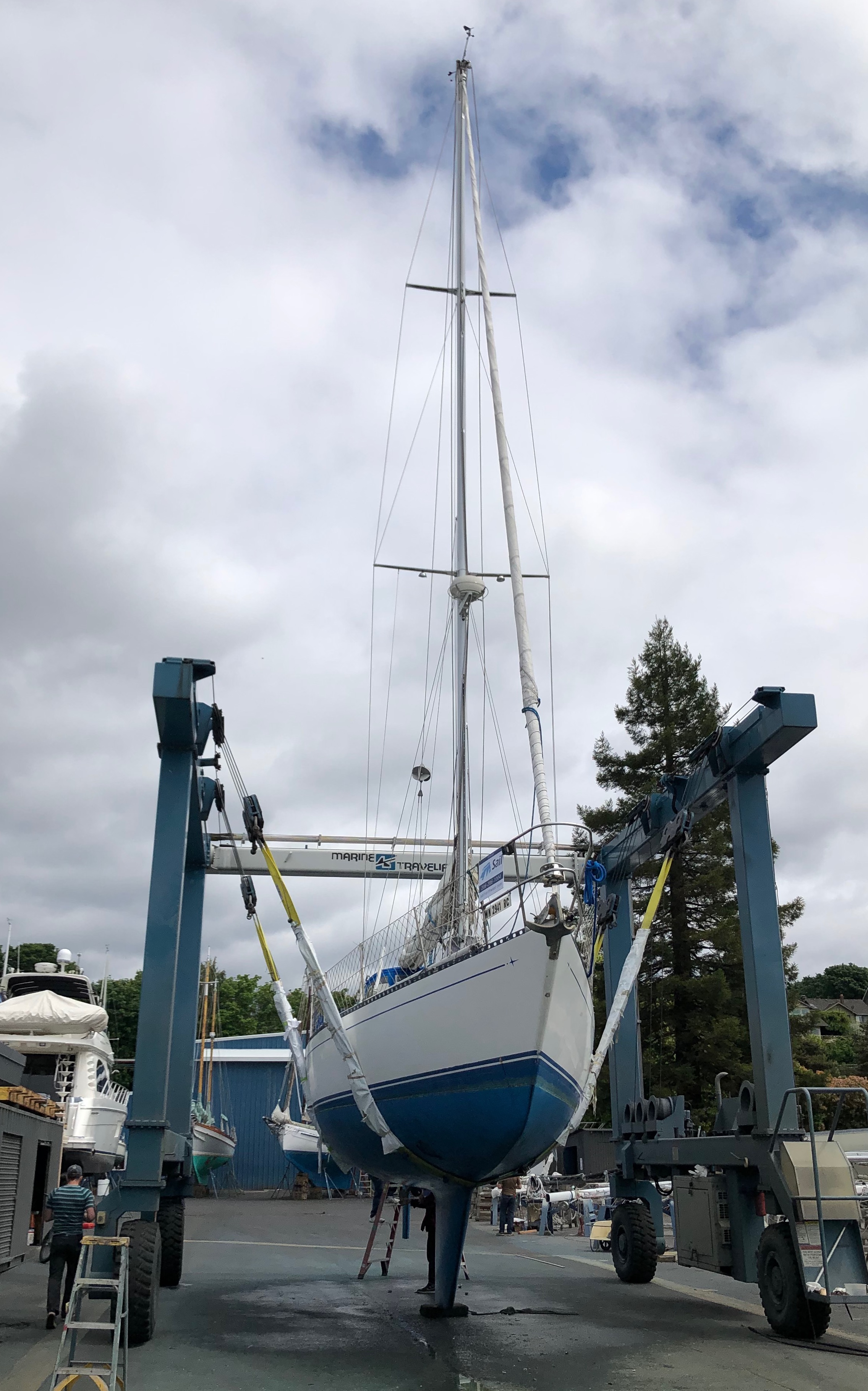Let's Buy a Boat
Post written by Marissa,The offer was accepted on May 5th, conditional on a successful marine inspection. Our yacht broker gave us some suggestions for inspectors, and the one we chose was booked out 20 days. So, we waited. And waited. And, waited some more. Finally, the day of the inspection came!
John, our surveyor, was really knowledgeable, thorough, and friendly. He was very patient with us as we asked all sorts of questions. He started in the interior of the boat, in the V-Berth, taking everything out of the cupboards and closets, checking the hull integrity, the hull/deck joint, all the fuel, water, and electric lines, the chainplates, everything. He looked over the diesel engine and the batteries, and we tried all the equipment on board: the all the electronic systems, the galley, the head. He pointed out a few small issues here and there, but he didn’t find any major issues.
After the inspection inside, we went topside and he looked at all of the equipment on the deck. He pulled all the stuff out of the lazarettes, checked the anchor locker, and looked at the boom and gooseneck. Finally, it was time for the haul-out and hull inspection. The yacht broker drove the boat from the slip over to the sling, and we scrambled up the ladder as they raised her out of the water.

Once out of the water, the yard pressure washed the boat and replaced the zincs. Then John took another hour or so looking very closely at the hull. He went over every square foot, tapping with his plastic hammer, looking for blisters, delamination, or other hull damage. He only found a couple of small blisters - cosmetic only, and not bad considering this boat is almost 40 years old!

It was really strange seeing her in the sling like this, but before long they were lowering her back into the water. It was finally time for the sea trial! Keep in mind, we hadn’t had a chance to see how she handled yet. The yacht broker was driving for us, and as he left the marina he opened her up to 3k RPMs, and that’s when we learned how fast she can go! At that engine speed, she’ll cruise at 6.5 to 7kts, and she cuts through the water very smoothly. There was a light breeze that day, so after exercising the engine, we headed up and raised the sails. John continued his inspection of the deck and rigging as we sailed along. We noticed the steering was stiff, but otherwise we had absolutely 0 complaints. It was so exciting! This boat was about to be ours!
Paperwork
With the inspection successful, all that was left was the closing paperwork and exchange of money. Because we are still in the time of COVID, all of this was done remotely - I had to find a notary to stamp the paperwork, then sent it in to the marine title company. Finally, about a week later, the title company emailed me with the good news - Southern Cross was officially mine!
During the paperwork process, we had to make a couple of decisions:
- Would we like to rename the vessel?
- Would we like to register the vessel with the state only, or with the Coast Guard?
We decided to rename her Ripley, after Sigourney Weaver’s character in the Aliens franchise (yes, we’re nerds). Also, because we have big plans to someday sail her into the ocean, we opted to register with the Coast Guard. This meant that it would take up to 3 months to get the registration paperwork back. In the meantime, as with any old boat, there’s more to be done!